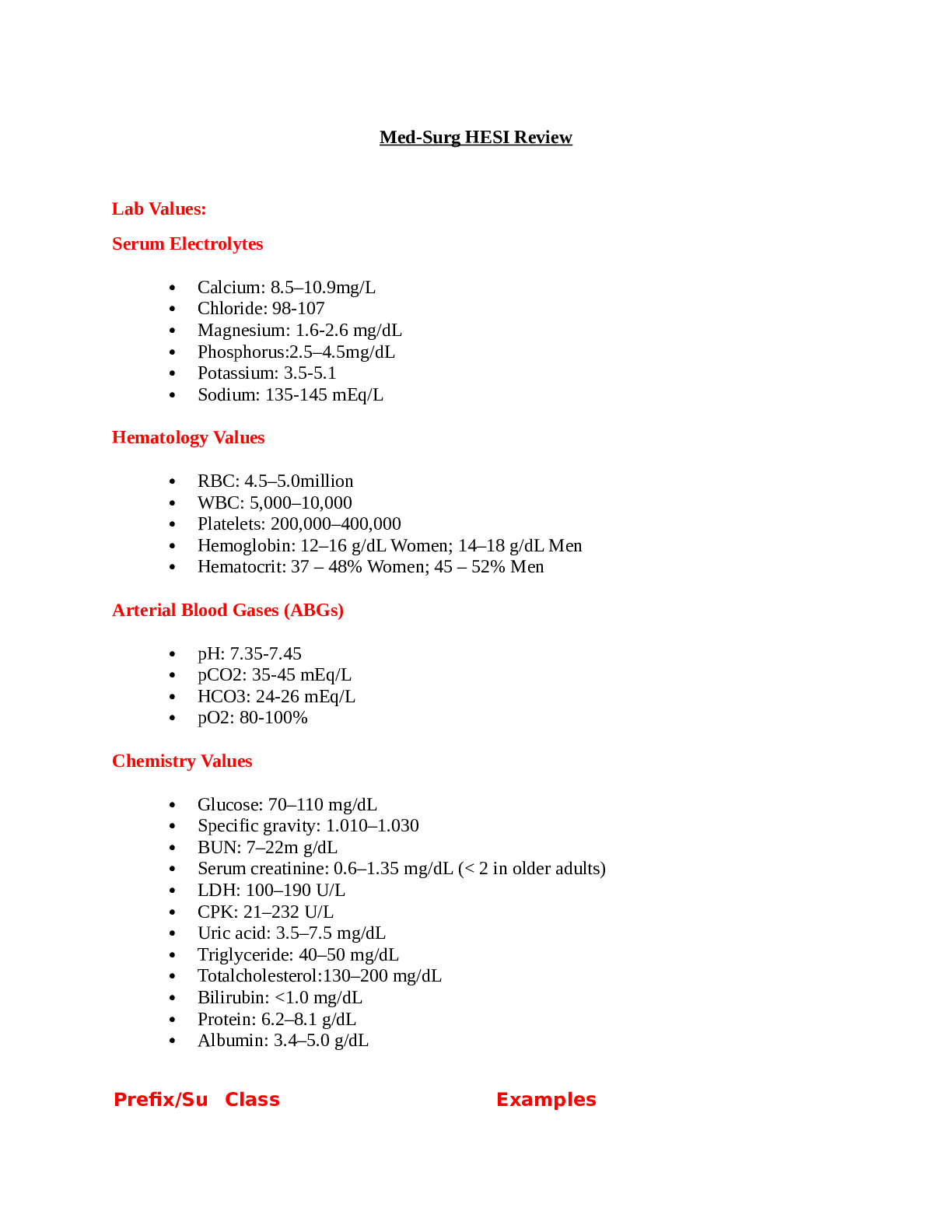Mathematics > QUESTIONS and ANSWERS > Chapter 10 Coursepack: Trigonometry Algebra 2 (All)
Chapter 10 Coursepack: Trigonometry Algebra 2
Document Content and Description Below
0.1 Trigonometry: The Sine Function Objectives: Calculate the sine ratio of a given angle and use it to solve a triangle. Use the patterns of special right triangles to calculate sine ratios. The ... branch of mathematics called trigonometry consists of three main functions, which are known as the sine, cosine, and tangent functions. In a right triangle, the sine of an acute angle is defined as the ratio of the opposite leg divided by the hypotenuse. The Greek letter “theta,” denoted θ, is typically used to represent the acute angle. The abbreviation for sine is sin, so the expression sin θ is read as “the sine of theta.” sin θ = opposite hypotenuse Read: “The sine of theta equals opposite divided by hypotenuse.” hypotenuse opposite leg θ adjacent leg EXAMPLE 1: Calculate sin θ and then use it to find x in the second triangle. 40 x 5 4 θ θ 3 In the first triangle, the side opposite θ is 4, while the hypotenuse is 5. We would write 4 sin 5 opp hyp = = Now we can show that the two triangles are similar triangles by using a theorem from Geometry called Angle-Angle (AA) Similarity. Each triangle has an angle θ, and these angles must be congruent. Additionally, the two right angles are congruent. Therefore, the two triangles share two pairs of congruent angles, which gives AA Similarity. Once we know that the two triangles are similar, the definition of similarity states that the corresponding sides are proportional. As a result, we can use the sine ratio to write and solve a proportion. 549 4 5 40 x = (Use the similar triangles to write a proportion.) 5x = 160 (Cross-multiply.) x = 32 (Divide both sides by 5.) Notice that the first triangle is a 3-4-5 triangle. Right triangles with integer lengths for all three sides form what we call Pythagorean Triples. Memorizing the Pythagorean Triples is useful because it reduces the need to use the Pythagorean Theorem. COMMON PYTHAGOREAN TRIPLES 3-4-5 6-8-10 9-12-15 12-16-20 15-20-25 etc.* 5-12-13 8-15-17 7-24-25 *The 3-4-5 triple can be used to derive infinitely many other triples by multiplying all sides by any integer. As long as all three sides are multiplied by the same value, all three sides will remain in proportion, thereby producing yet another triple. This process gives additional common triples such as 6-8-10, 9-12-15, etc. (The same process can be used to find multiples of the 5-12-13, 8-15-17, and 7-24-25 triples, but we do not commonly use these triples.) In addition to the Pythagorean Triples, we want to recall and be able to use special right triangles such as the 30-60-90 triangle and the 45-45-90 triangle. THEOREM: 45°-45°-90° TRIANGLES In any 45°-45°-90° triangle, the hypotenuse is 2 times each leg. 45° a a 2 45° a We could paraphrase the theorem with the following two rules: 1. In any 45°-45°-90° triangle, given the legs, multiply by 2 to find the hypotenuse. 2. In any 45°-45°-90° triangle, given the hypotenuse, divide by 2 to find each le [Show More]
Last updated: 2 years ago
Preview 1 out of 75 pages

Buy this document to get the full access instantly
Instant Download Access after purchase
Buy NowInstant download
We Accept:

Reviews( 0 )
$12.00
Can't find what you want? Try our AI powered Search
Document information
Connected school, study & course
About the document
Uploaded On
Jul 28, 2022
Number of pages
75
Written in
Additional information
This document has been written for:
Uploaded
Jul 28, 2022
Downloads
0
Views
88





